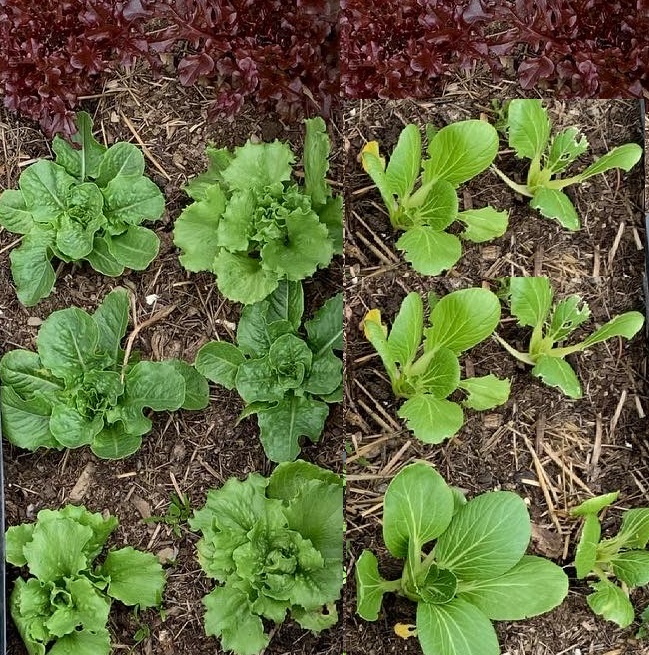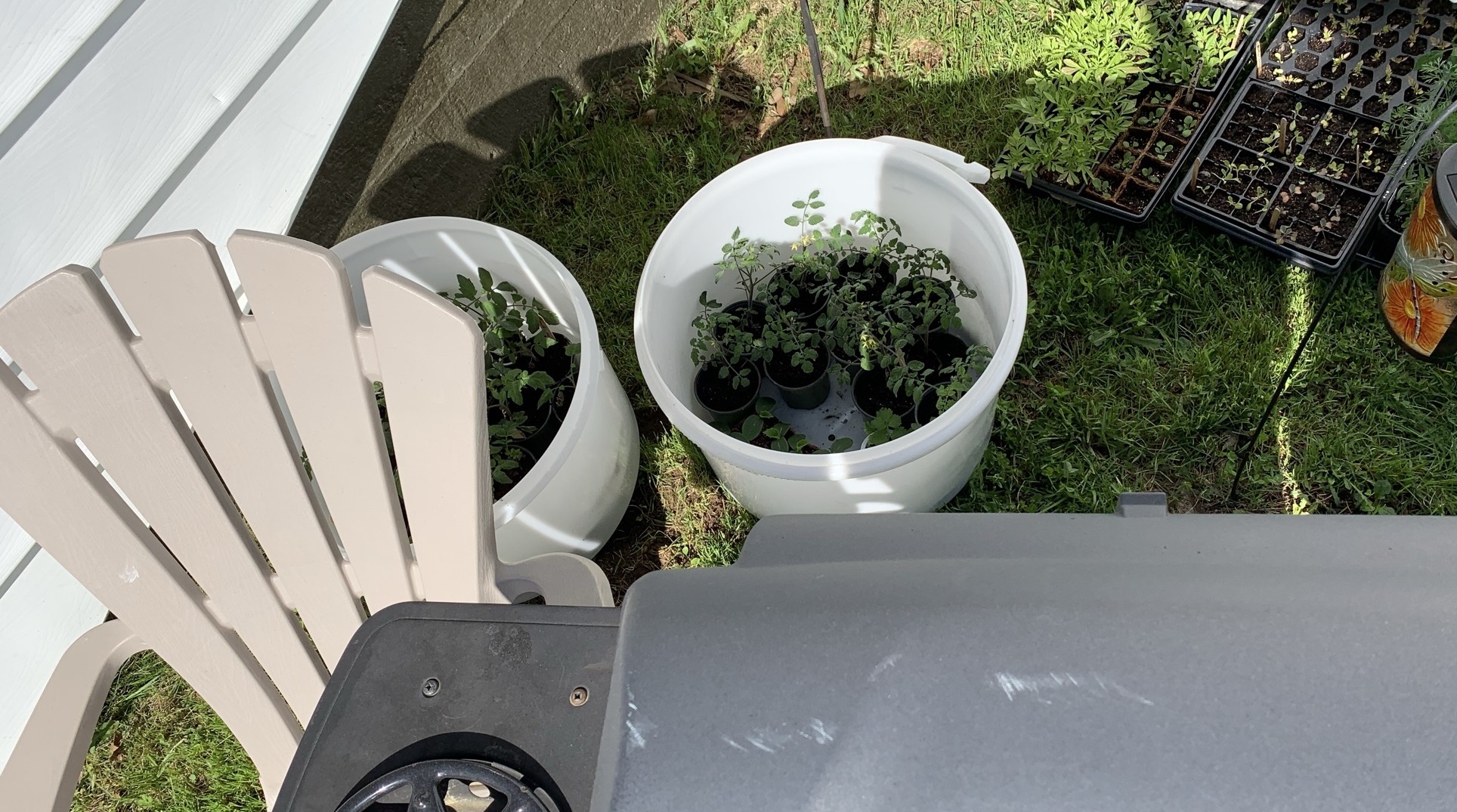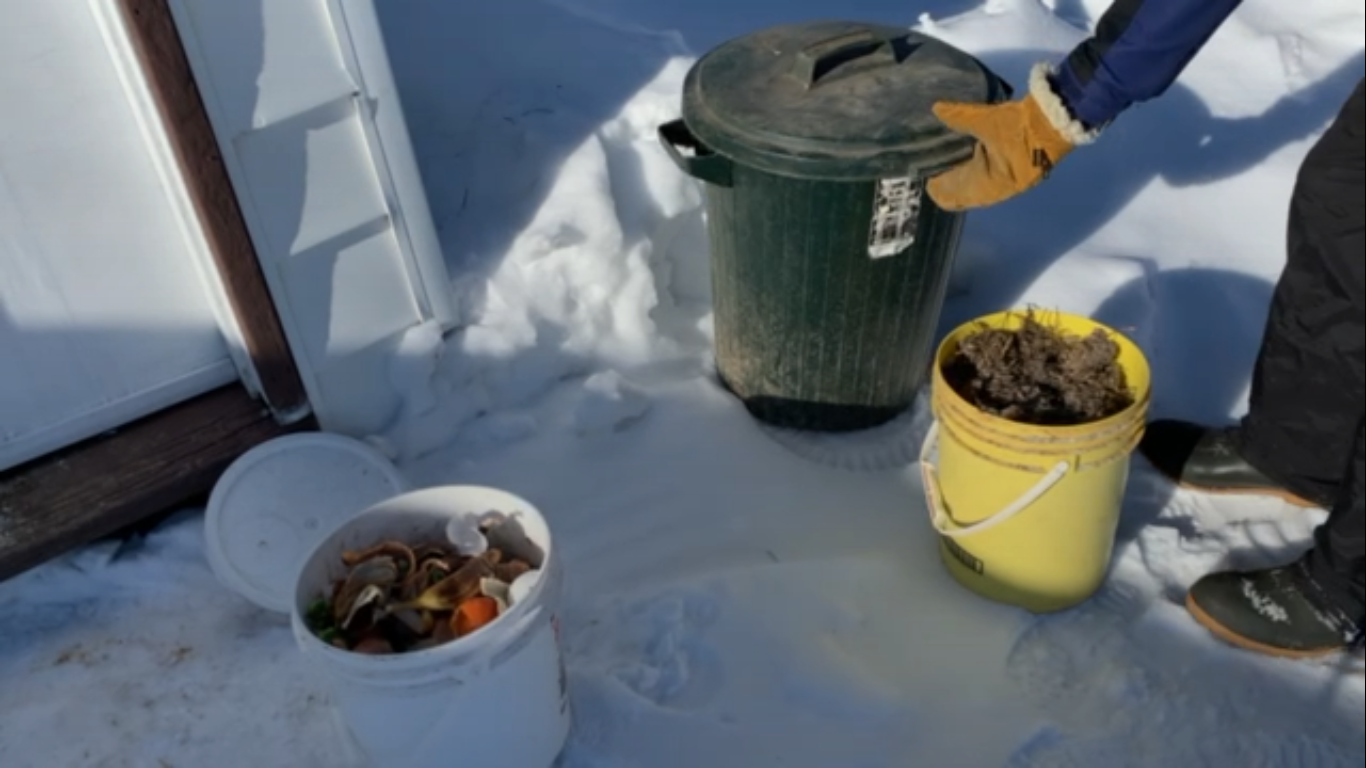Year Round Gardening in Zone 3 – Can it be done?
Am I the only northern gardener who has read blog posts about year round gardening with a twinge of jealousy? It can get under the skin a little when you finally find a “northerner” who says they garden year-round and then you find out they live in USDA Hardiness Zone 5B.
The Science behind Year Round Gardening
The science
is sound. You need to set out the seeds
of cold hardy plants six to eight weeks before your first fall frost. This
should allow your plants to reach maturity before cold weather and lack of
sunlight cause everything to go dormant.
The magic number is 10 hours of daylight. During the long winter months with less than 10 hours of daylight, even the most cold-hardy plants will remain dormant, but they can still survive and be harvested under the right conditions. The question is, "Do I have the right conditions in Zone 3B?" We are about to find out.
According to www.timeanddate.com/sun, the magic dates at my latitude are November 1 and February 9.
Between those two dates are the Persephone Days, named after the Greek vegetation goddess who purportedly made an annual trip to Hades during the winter leaving the earth barren.
The Farmer’s Almanac says my average first fall frost comes on September 16, but since I live in a valley next to a brook, I don’t remember ever getting by that late without a frost.
Low Tunnel
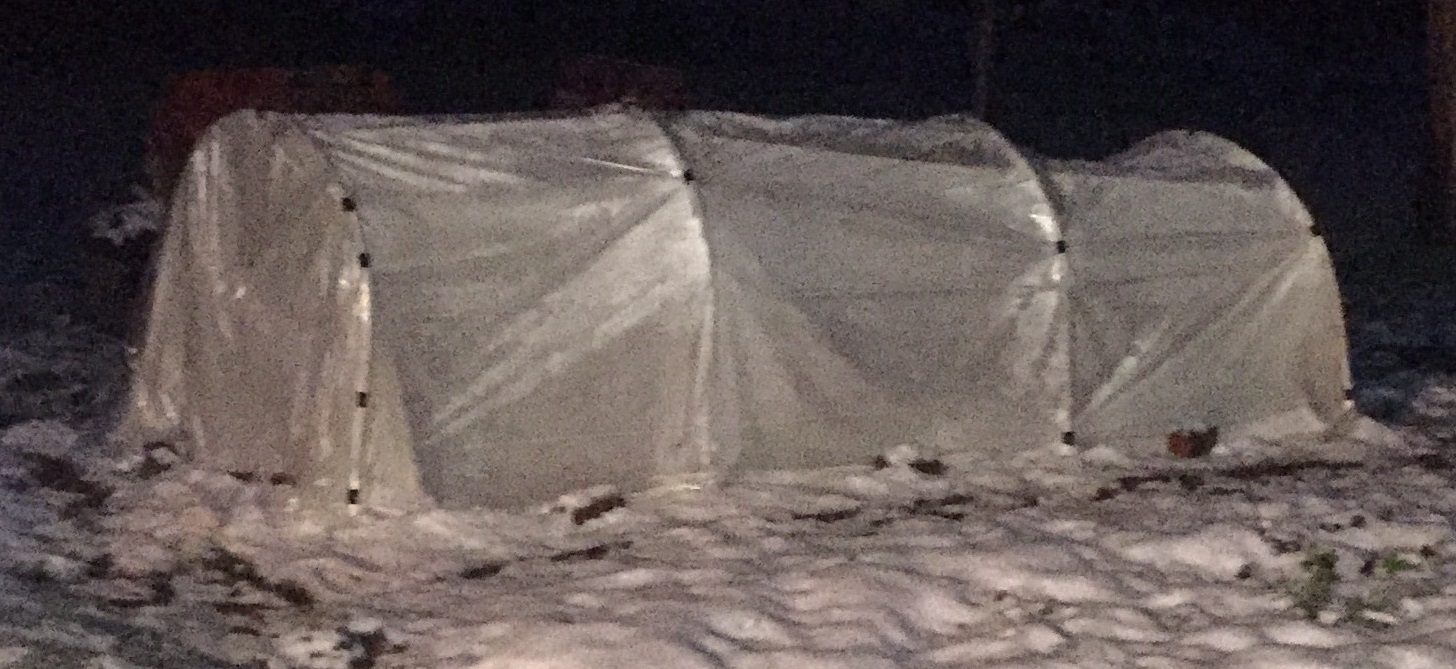 Low Tunnel filled with young carrots in late October in Plant Hardiness Zone 3
Low Tunnel filled with young carrots in late October in Plant Hardiness Zone 3My carrot seeds got planted on July 28 -- too late I’m afraid. They germinated much quicker than normal in the mid-summer warmth and reached new carrot size before the magic date, but they did not reach full maturity.
The carrots are now in a low tunnel made from 1/2 inch electrical metallic tubing (EMT) conduit that was bent with a marvelous home-made hoop bender.
Initially, the low tunnel was only covered with a floating row cover. Once we hit our 10 hours of daylight, I took the cover back off, had a feed of carrots, covered the rest with lots of straw, and reapplied the row cover as well as a heavy painter’s plastic. I’m hoping for fresh carrots at Christmas. We will see!
Cold Frame
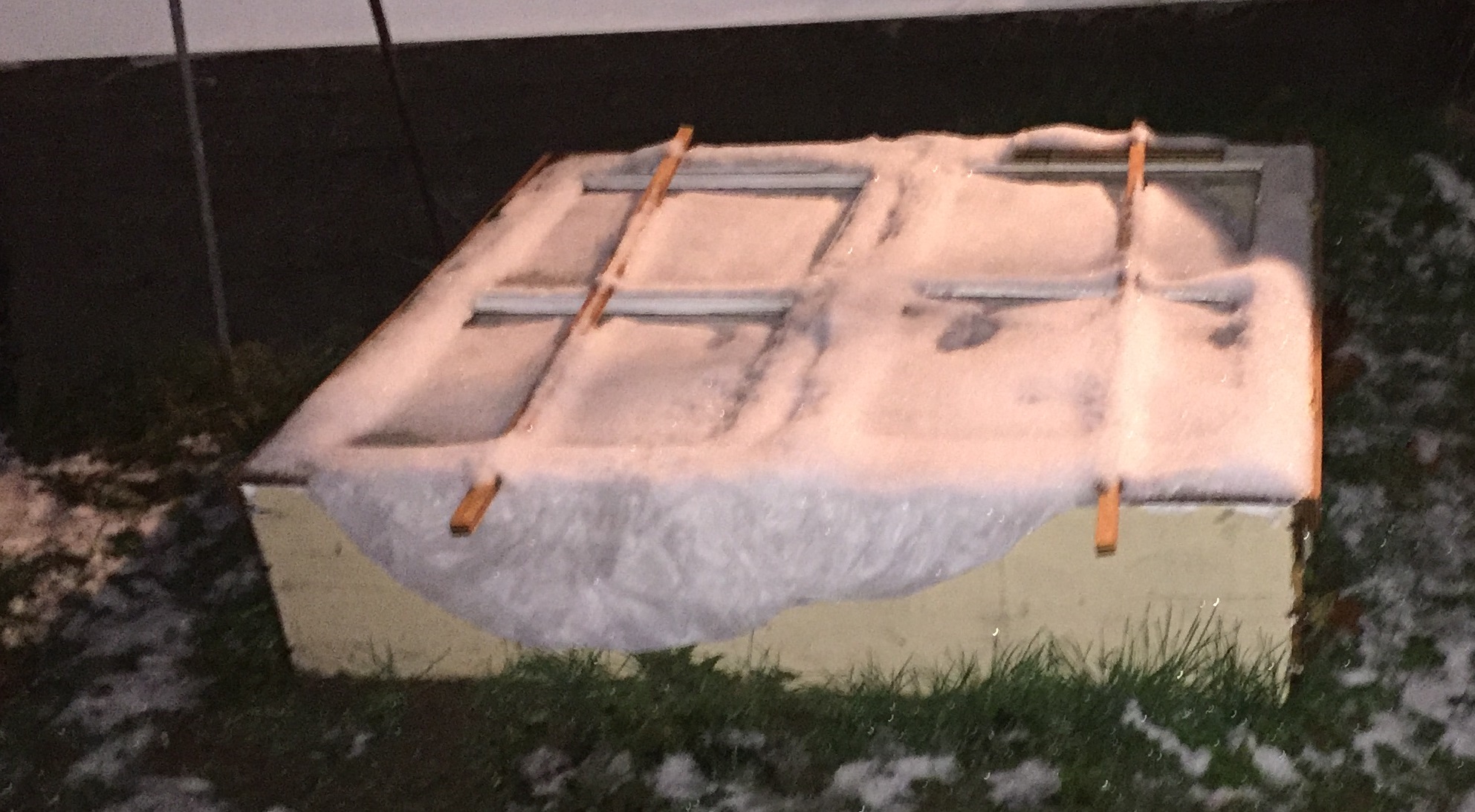 Cold frame of salad greens in late October in Zone 3
Cold frame of salad greens in late October in Zone 3On August 17, I planted seeds of some cold hardy plants in a cold frame on a slight slope with a southeast exposure next to my house. While the house does shade the cold frame from early morning and late evening sunlight, I’m hoping the warmth expelled through my less than adequately insulated basement walls and the protection from prevailing winds will make up for the partial shade.
The arugula, beet greens, and spinach did awesome. The kale was doing fine until the cabbage worms found it. (They also bothered the arugula to a lesser extent.) The leaf lettuce and carrots did so-so, while the microgreens mix and bunching onions were a total disappointment.
To enjoy fresh greens from my cold frame all fall, I just had to swing back the glass doors and help myself. Now, however, a large floating row cover is folded multiple times over the greens under the glass to protect them from the cold.
Most advocates of year round gardening recommend using heavy row covers for extra frost protection, but like most gardening supplies they are in short supply during the pandemic so the folded lighter blanket will have to do.
In Zone 3, year round gardening is a bit doubtful, but I'm hoping for a fresh salad at Christmas? We will see!
